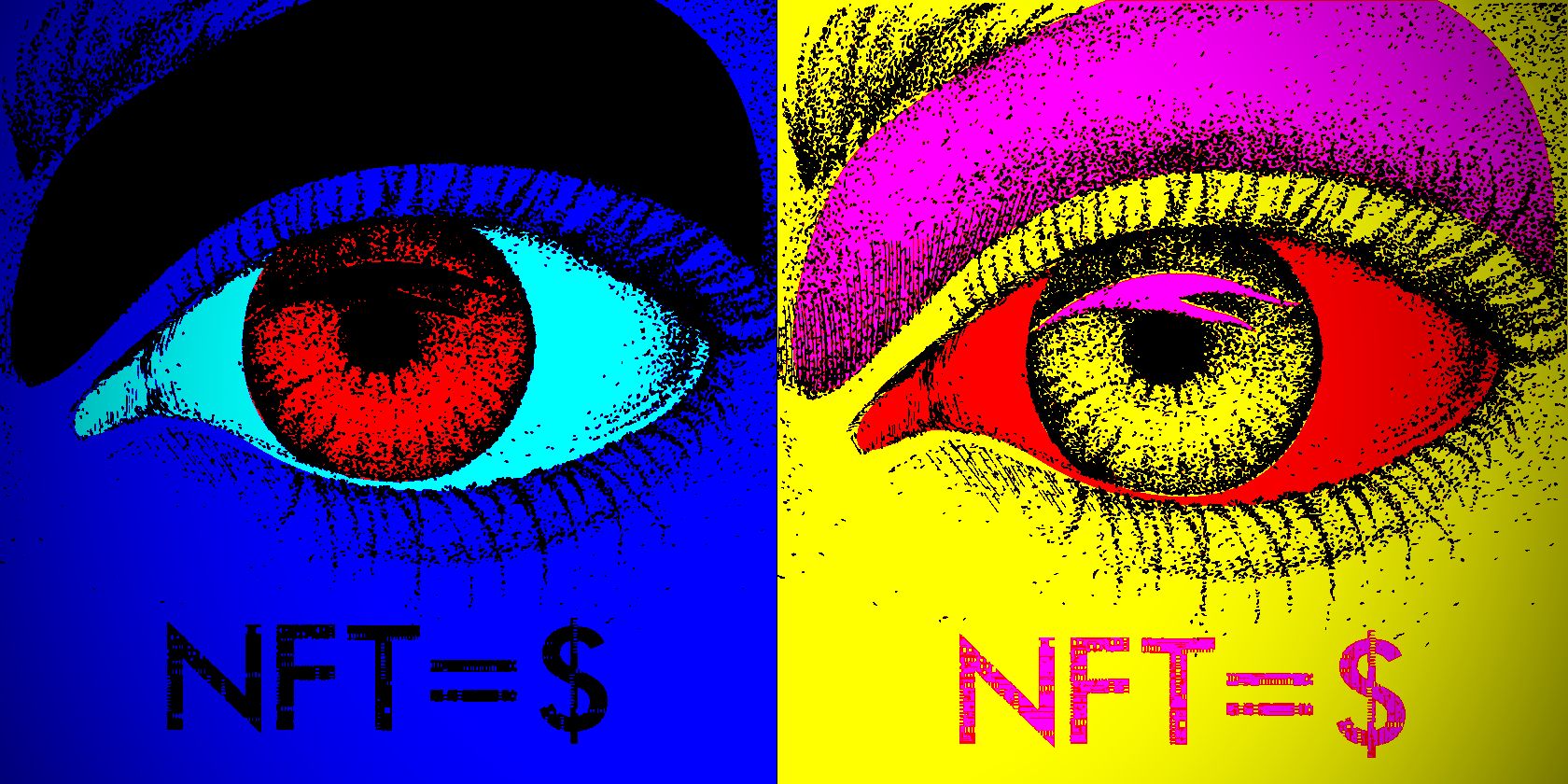You know NFTs are all the rage right now. Maybe you even know that “NFT” stands for Non-Fungible Token. But, do you know what a Non-Fungible Token is?
What Is an NFT?
Non-Fungible Tokens are a direct product of the blockchain explosion. No matter how intimately you plan on getting involved with NFTs, you need some understanding of blockchain and cryptocurrencies to follow along on NFTs. “Token” comes directly from the crypto space, and “fungible” is a jargon term from finance and economics.
The “Token”
A blockchain is a form of data recording. Data is packaged such that the last piece of data in one “block” is the same as the first piece of data in the next block. That’s the short version, and it’s all you need for us to continue learning about NFTs, but you can check out our in-depth blockchain explainer for more information.
Information stored in a blockchain is virtually impossible to tamper with because any changes within a block would disrupt the rest of the chain. Cryptocurrencies are one application of blockchain technology, but cryptocurrencies, as you might understand them are only strictly related to NFTs in that they both use blockchain.
“Tokens” are digital artifacts created within a blockchain. The “minting process,” whereby new tokens come into existence, creates unique digital artifacts that are impossible to recreate or duplicate.
In cryptocurrencies, the token is the thing that has value. Most cryptocurrency tokens are “fungible.” NFTs, by definition, are not. So, what does that mean?
Fungible and Non-Fungible Tokens.
Something fungible is worth as much as another thing like it. Tokens on the Bitcoin blockchain are unique, but they are also worth just as much as any other token on the blockchain.
If you’re new to cryptocurrencies, think about fungibility, as demonstrated by common banknotes. Every banknote has a serial number. So, every dollar bill is unique, but it’s also not worth more than any other dollar bill. Every pound note is unique, but it’s also not worth more than any other pound note.
Now, imagine engraving that serial number on a piece of art and destroying the banknote. The monetary value of the banknote is lost, but the art takes on a certain degree of verifiability and authenticity, a “demonstrable uniqueness” that it didn’t have before.
This analogy isn’t perfect because digital art is much easier to replicate than physical art and digital money is much harder to replicate than physical money.
An NFT, then, is a unique digital asset that you cannot divide into smaller pieces (unlike a digital or cryptocurrency), but has an immutable and traceable history (like most digital or cryptocurrencies).
The process of minting an NFT is time and cost-intensive, but it does give artists more control over what art is sold, how it is sold, and how much. To some buyers, buying an NFT is less about owning art and more about contributing to the artist and the art community.
What Is an NFT to a Buyer?
When you buy an NFT, what you’re really buying is the serial number—the special code that ties the digital artifact to an exact point on the blockchain. You’re not actually buying the digital artifact or even the intellectual property rights to it.
Buying an NFT is essentially buying a certificate of authenticity.
However, other people can continue to legally replicate the digital artifact. For example, the Disaster Girl meme sold as an NFT, but how we interact with the image and idea hasn’t changed. Somone now “owns” the meme, but you can still find the image, as well as legally replicate and modify it.
This isn’t always the case. Byte Agency and Deft Apparel sold NFTs of a virtual coat along with a digital render that appeared through a user’s Snapchat camera. That meant that only NFT purchasers could “wear” the virtual coat. But, this isn’t usually how it works.
When You Buy an NFT, What Do You Get?
There has been a lot of discussions recently about whether an NFT buyer actually “owns” anything. After all, they get to say that they own it, but the image itself remains available to everyone. The closest parallel to this happens to be ownership of physical art.
Some famous and recognizable artworks are privately held, but their digital likenesses are just a click away. Other famous art is privately owned but is on “permanent loan” to a public gallery or museum. The above painting is privately owned, but you can find it for free on the internet. Does that make its ownership worthless? Not to the owners.
Many critics say that NFTs are somewhere on the spectrum between a craze and a scam but are, at best, not worth your money. Indeed, some “artists” have sold some pretty ridiculous NFTs at pretty ridiculous prices. You can call that “proof of principle,” or you can say that it makes it even harder for people to take the idea seriously.
How Much Do NFTs Cost?
The cost of NFT lies in the eye of the beholder. Most NFT sales occur through NFT marketplaces, allowing users to place bids on unique digital assets within a certain period. Like eBay and other open marketplaces, the sky is the limit.
As with regular artworks and other collectibles, other factors play into the price: scarcity, artist renown, collectibility, aesthetics, and so on.
Digital artist Beeple sold an NFT for $69 million. The NBA has created a series of NFTs of spotlight moments over the years, creating a $250 million trading market overnight. Twitter CEO Jack Dorsey turned his first-ever tweet into an NFT and sold it for over $2.9 million (donating the proceeds).
In short, an NFT is worth however much someone is willing to pay.
Are NFTs Worth it? That’s Up to You.
The question should be less about whether non-fungible tokens are worth the money and more about how your purchases express your relationship with art and support artists. So, the standard advice for NFTs is the same as the standard advice for all crypto tokens: “don’t buy what you don’t believe in, don’t spend more than you can afford to lose.”
Image Credit: Taylor Dobbs / Flickr
About The Author

